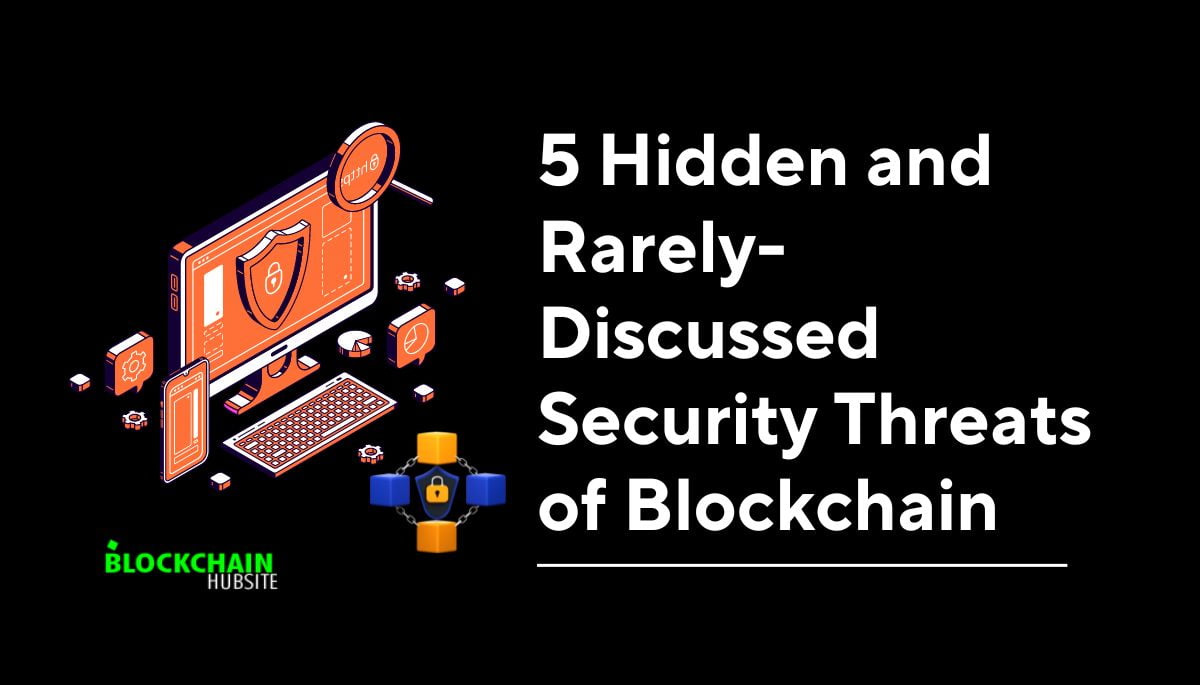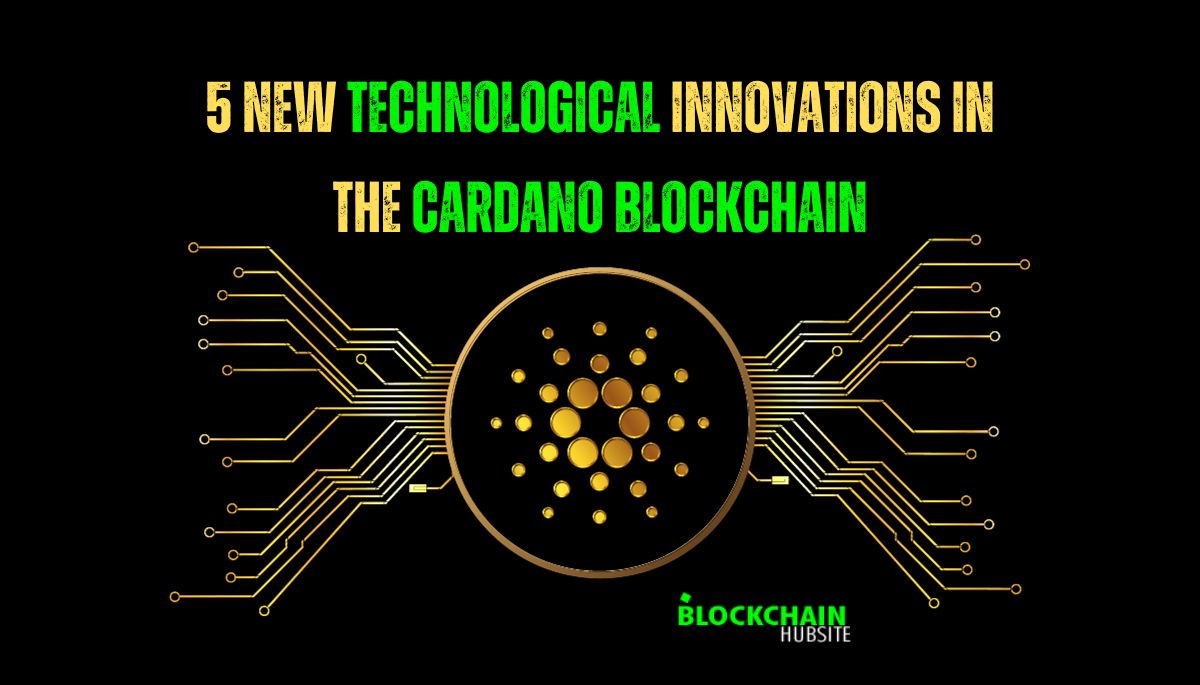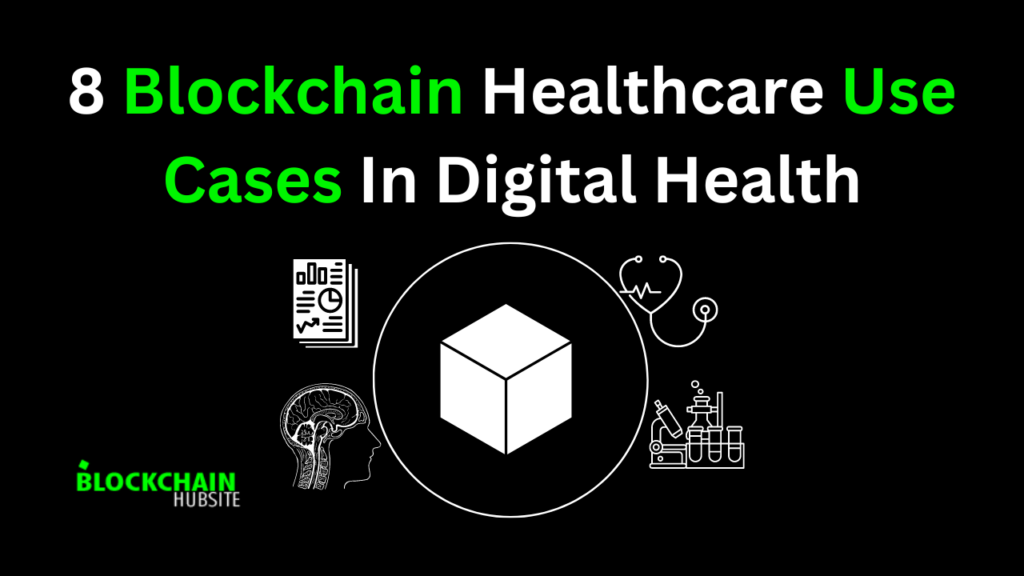
Table of Contents
Introduction
The blockchain ecosystem relies heavily on Layer 1 blockchains. The first layer serves as a solid base upon which the other levels can be created. When it comes to decentralization and security, layer 2 solutions rely on layer 1. Layers 1 and 2 work together to open the door to new and exciting uses of blockchain technology, but it is layer 1 that provides the essential foundation.
The ‘layer one’ blockchains are the backbone of the bitcoin industry. These underlying blockchains serve as the framework upon which the ecosystem is created. Bitcoin, the biggest and most well-known blockchain, is an example of a layer one blockchain. However, it’s important to remember that not all blockchains at layer one are the same. For example, Bitcoin fails to meet the criteria for a useful layer one protocol since it cannot process smart contracts within its transaction confirmation process.
Smart contracts are crucial to the success of a layer one blockchain. For instance, Ethereum uses Solidity, a scripting language that is Turing complete. It can handle logical operations like “if-then” expressions, making it composable. The phrase “layer one” refers to the fact that computer programs or “smart contracts” can be written on top of the Ethereum blockchain. This distinction is crucial in the blockchain industry, and it’s why Ethereum has become the most widely used layer one blockchain.
This article will concentrate on the foundation, layer one blockchains. Bitcoin, Ethereum, Binance Chain, Avalanche, and Fantom are all simple instances of layer one blockchains. These systems each have their own chain and can function independently of any external protocols. Although it can be difficult to scale base protocols, they are decentralized, secure, and scalable.
What Are Layer-1 Blockchains And How Do They Work?
Definition: A Layer 1 (L1) blockchain is a blockchain that serves as the foundation for other blockchain networks and applications. The two largest L1 blockchains are Bitcoin and Ethereum. Layer 1 (L1) blockchains are necessary for Layer 2 (L2) to function as they provide the underlying framework and security mechanisms.
Regarding blockchains, scalability refers to enhancing the network’s transaction processing rates and processing power to handle a more significant number of users and more complex applications. If blockchain networks can scale to provide more processing power, they can compete with centralized networks regarding transaction volumes, application development, and user engagement. An increase in the throughput rate, expressed in transactions per second, is what ” scaling ” means from a technical perspective.
Introducing layer-1 solutions is an essential strategy for addressing the scalability issue. To make the system more scalable, it is necessary first to address the foundational layer of the blockchain, which is the protocol itself. Changing the consensus protocol and adding sharding capabilities are two of the most common layer-1 enhancements.
Bitcoin, Ethereum, BNB Chain, Litecoin, and Avalanche are all examples of layer-1 blockchains now in operation. Bitcoin, however, continues to be the most troubled by scalability difficulties because its network depends on a growing number of miners to support growing transaction volumes and throughput.
The Importance of Layer One Blockchains
It is crucial to know if a newly introduced cryptocurrency uses a layer one blockchain before investing in it. Can this token be upgraded in the future? Tokens representing a real-world asset cannot be considered layer-one tokens but the directive product of a layer-one token standard, such as Ethereum’s ERC-20 token. The token’s value in the context of a tokenized asset is restricted to the rights of ownership specified in the token contract.
On the other hand, layer one blockchains are unique from other coins in that they are intended to be composed and provide a framework for further software. Ethereum was the first blockchain platform to offer true layer-one composability. Several alternative blockchains have been introduced since then, including Cardano, Solana, Algorand, Hedera, Casper Network, Near Protocol, and others. To attract consumers and business partners, each of these offers something distinctive.
Key Components of Layer 1 Blockchain

Consensus Mechanism
- A vital Layer 1 blockchain feature, consensus algorithms guarantee the integrity of all transactions and keep the network safe.
- PoW and PoS are two common examples of Layer 1 blockchain consensus techniques.
- In PoW, miners validate transactions and earn rewards by solving complex mathematical problems, while in PoS, currency holders stake coins to validate transactions and gain incentives.
Processing Transactions
- Layer 1 blockchain is no exception to the rule that all blockchain networks must be able to process and validate transactions.
- Hash functions and digital signatures are just two examples of the cryptographic techniques used by layer-one blockchains to maintain the security and integrity of transactions.
- Smart contracts allow Ethereum developers to automate and streamline transaction processing on the Ethereum Layer 1 network.
Network Safety
- A fundamental feature of Layer 1 blockchains, consensus algorithms guarantee that the network is safe from assaults and that data stored in the blockchain cannot be altered in any way.
- Layer 1 blockchains protect the network from attacks using sophisticated security methods like hash functions and digital signatures.
- Layer 1 blockchains use techniques like multi-factor authentication and encryption to fortify the underlying network’s safety further.
Features of a Smart Contract
- Smart contracts are computer code agreements that can be automatically executed based on predetermined conditions.
- Automating complex transactions is made possible through smart contracts, a crucial part of decentralized applications.
- Layer 1 blockchains, like Ethereum, have smart contract features. This lets developers make decentralized applications.
Types of Layer One Blockchain Solutions

Layer 1 blockchain protocols need to be decentralized, secure, and scalable at the very least. The layer-one blockchain networks have more methods available to ensure optimal scalability. Here are two types of layer-1 blockchains, distinguished by the scalability strategies they employ.
Consensus Protocol
Layer 1 blockchain solutions naturally begin with discussions about consensus mechanism migration. Proof of Work is a common consensus mechanism in traditional blockchain networks. However, it is both time-consuming and energy-consuming. While Proof of Work facilitates cryptographically-based decentralized consensus and security, it has severe drawbacks in terms of scalability.
On the other hand, the Proof of Stake consensus mechanism might be used by a layer-1 blockchain system. Using Proof of Stake, a blockchain network can reach consensus in a decentralized manner by verifying block transactions based on stakes. Proof of Stake, while faster at processing transactions, sacrifices security for efficiency. Innovative layer-one blockchain enhancements must be implemented to solve scalability problems while keeping safety at a high level.
Sharding
Sharding would also be prominent among the layer one blockchain list entries. The blockchain’s distributed ledger technology can benefit from this effective technique, typically employed for database partitioning. Sharding is a tried-and-true technique when it comes to boosting transaction throughput at the layer 1 level. Sharding is still very much in its experimental phase in the blockchain industry.
The process involves dividing a network into smaller, independent databases or shards. The divide of the network and its nodes also helps efficiently distribute the workload, which leads to speedier transactions. All shards operate independently with their transactions, blocks, and nodes.
Sharding is a technique used in layer one blockchain instances that eliminates the need for every node to store an entire copy of the blockchain. Instead, they communicate the status of their local data, including address balances and other metrics, and report completed job transactions to the main chain.
Layer 1 Blockchain Examples
The leading layer-one blockchain networks that support most decentralized apps, or dApps, are listed below.
Bitcoin: Layer 1 of the Bitcoin blockchain is the foundation that protects the $367 billion in market capitalization that makes Bitcoin the most prominent cryptocurrency in circulation today. It uses a consensus technique known as proof-of-work, which involves verifying newly created blocks with an algorithm that solves a problematic cryptographic challenge. Although Bitcoin is regarded as the most trustworthy decentralized network, it can take ten minutes to an hour to complete a single transaction.
Ethereum: With the introduction of smart contracts, Ethereum—the second-largest layer one network in Web3—became more dynamic than just a cryptocurrency mine and payment platform. Smart contracts will execute and confirm a transaction automatically when unavoidable circumstances are met. According to its website, Ethereum switched from proof-of-work to proof-of-stake verification to lower energy consumption by 99.95%. The Merge, which occurred on September 15, was where the mainnet and the proof-of-stake sidechain converged.
Algorand: The Algorand blockchain is a layer-1 alternative that uses smart contracts. Its purely proof-of-stake consensus process sets it apart from Bitcoin and Ethereum, the two market leaders. This method immediately decentralizes verification by randomly picking miners or block validators.
Cardano: Cardano is one of the first layer one blockchain to adopt a proof-of-stake mechanism effectively, and it is much-liked for these reasons as well as its low petrol prices, high degree of decentralization, and the potential to passively generate its native token, ADA, for its users. More than 250 transactions per second can be validated on it, compared to just 15 on Ethereum.
Use Cases of Layer 1 Blockchain

Layer 1 blockchains have many uses, including:
- Digital currency: One of the essential uses of Layer 1 blockchains is as a digital currency, allowing for the direct and safe movement of funds between users.
- Decentralised finance (DeFi): Layer 1 blockchains are used to build decentralised financial applications like lending and borrowing platforms, stablecoins, and decentralised exchanges.
- Supply chain management: Transparency and traceability in supply chain management using Layer 1 blockchains can help reduce the potential for fraud and counterfeiting.
- Identity management: Securely storing and managing personal data is possible with Layer 1 blockchains, allowing individuals to take charge of their information and give or refuse permission to use such information.
- Voting systems: Using Layer 1 blockchains, we can create trustworthy voting systems that resist fraud and inspire trust among voters.
- Gaming: In the gaming industry, Layer 1 blockchains can create decentralised platforms where players can buy and sell virtual goods and play games independently of any central server or server administrator.
- Digital collectibles: Non-Fungible Tokens (NFTs) are an example of a digital collectible that may be issued on a Layer 1 blockchain and then bought, sold, and traded, much like a physical token.
These are, however, a few of the many uses for Layer 1 blockchains. Layer 1 blockchains provide a trustworthy, decentralised foundation, opening fresh opportunities for digital innovation and economic growth.
What are the Pros and Cons of Using a Layer 1 Blockchain?
Advantages
- Decentralization- Layer 1 networks are often entirely decentralized and do not have a single point of control. This improves safety and resistance to censorship.
- Security- Layer 1 blockchains use cryptographic safeguards, such as proof-of-work or proof-of-stake consensus, to ensure the integrity of each transaction.
- Immutability- Once recorded on the blockchain, data on layer 1 chains is immutable, giving transparency.
- Smart Contract Functioning- Layer 1 blockchains, like Ethereum, can support smart contracts. This lets developers make decentralized applications.
- Interoperability- By eliminating the need for third parties in transactions, smart contracts boost productivity.
- Transparency- Anyone can observe the blockchain’s transaction history on a layer 1 blockchain. This encourages responsibility and aids in the prevention of fraudulent acts.
- Interoperability- Layer 1s may communicate with one another, facilitating cross-chain communication when appropriate.
- Liquidity- Primary layer 1s have large user bases and high levels of liquidity.
Disadvantages
- Scalability problems- Layer 1s can limit how many transfers can happen per second, leading to congestion and high fees.
- Scalability issues- Protocol upgrades on decentralized layer 1s can be challenging because they require community consensus.
- Difficult upgrades- Layer 1s can be challenging to design and implement due to their decentralized nature.
- Complex architectures- Proof-of-work mining consumes a lot of energy and is essential for some layer 1s like Bitcoin.
- Slower transaction times- Unlike layer 1 solutions, layer 2 ones can provide a more rapid conclusion to a transaction.
Future of Layer 1 Blockchain
Here are a few key points about the future of layer 1 blockchains and prospective developments:
Continued innovation in scaling solutions: Techniques like sharding, sidechains, rollups, and validiums will help improve layer 1 traffic and transaction speeds.
Transition to proof-of-stake: Networks are changing away from proof-of-work consensus models, which use a lot of energy, and toward proof-of-stake models, which use less energy and are better for the environment.
Competition between layer 1 platforms: Leading layer 1 platforms like Ethereum, Solana, Polkadot, etc., will compete fiercely for developer mindshare and user participation.
Interoperability solutions: Interoperability solutions will build links between layer 1 chains to make it easier for assets and data to move from one network to another.
Regulations and compliance: As the number of people using blockchains grows, layer 1 protocols will change to add features like privacy, methods for identifying people, and making sure they follow the rules.
Rise of layer 2 scaling: Layer 2 solutions built on top of layer 1 chains will handle more transactions and use cases to improve scalability.
Institutional adoption: Big companies and banks will continue to invest in and build infrastructure on top of layer 1 networks, which are the most popular.
Governance evolution: Decentralized autonomous organizations (DAOs) will help make it possible for the community to rule layer 1 blockchains on-chain.
Sovereign blockchains: Governments could create national-level layer 1 chains to issue Central Bank Digital Currencies (CBDCs) and control monetary policy.
Conclusion
Layer 1 blockchain examples and their principles show how layer 1 enhances scalability in various scenarios. A wide variety of businesses and practical applications are beginning to adopt blockchain technology. Layer one blockchain networks could start a new era with the help of modifications to the underlying protocol. The goal of blockchain networks to be secure and decentralized comes at the expense of their scalability.
Blockchain networks are inherently insecure, but developers can make them decentralized and secure without sacrificing scale. The options for scaling at the first layer increase throughput and alter the standards for social progress. The lack of general familiarity with layer 1 blockchain solutions is now the biggest obstacle to their widespread adoption.
FAQs
1. Is Solana layer 1 or 2?
Yes, Solana is a layer 1 blockchain.
2. How many layer 1 blockchains are there?
There are dozens of layer 1 blockchains in existence today. Some major examples include Bitcoin, Ethereum, Solana, Polkadot, Cardano, Avalanche, Cosmos, Algorand, etc. The exact number is changing all the time as new layer 1s are developed and launched.
3. Is Polkadot layer 1 or 2?
Polkadot isn’t a layer 1 blockchain. Polkadot is a “metaprotocol” for the deployment of other “layer 1” blockchains (such as smart contract platforms and application-specific blockchains), making it a layer 0 blockchain.
4. Is Binance a layer 1?
No, Binance is not layer 1. The Binance exchange is a centralized marketplace, not a layer 1 exchange. But it does have some layer 2 solutions and hopes to release a native blockchain in the future.
5. Which coin is better than Solana?
No one coin is “better” than Solana. Each has trade-offs and benefits that may improve it for different uses and investors. Which is “best” relies on what’s most important to you, such as speed, decentralization, ecosystem, costs, etc. Because of their different technical forms and short histories, it’s hard to compare them fairly. Most experts say you should look into their technical features and best uses before deciding which is “better” for your needs.
6. Is BNB Layer 1 or 2?
BNB is not a layer 1 or 2 blockchain. It is a Binance Chain token, a centralized blockchain created by Binance.
7. How do layer 1 blockchains make money?
Layer 1 blockchain makes money through transaction fees, staking rewards, and governance tokens.




